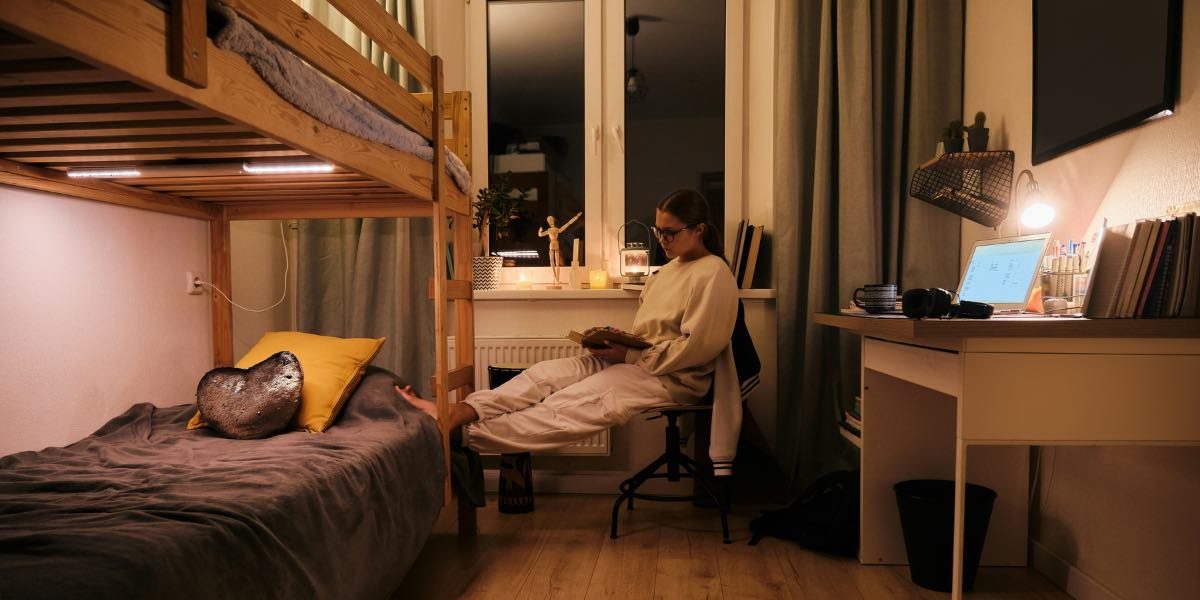Over the past decade, micro-apartments and smaller new builds have seen increasing demand, especially in urban areas. These compact living spaces offer a potential solution to the challenges of rising property prices, limited space, and the need for more sustainable living. While smaller living spaces are not a new concept, they have become more prominent due to changes in living preferences, particularly among younger generations who prioritize convenience and affordability over traditional spacious homes.
The trend toward micro-apartments and smaller new builds reflects a broader shift in urban housing, with many individuals seeking ways to live in central locations without the financial burden that often accompanies larger properties. As cities continue to grow, this shift is influencing both housing markets and the overall design of urban spaces. These changes are likely to continue as urbanization increases and living costs remain a concern.
Read also: Cost of Living in Denver: Housing, Food & Expenses
Why Micro-Apartments Are Gaining Popularity
Several factors are contributing to the rise of micro-apartments and smaller new builds in urban settings. One of the most significant drivers is the ongoing issue of housing affordability. As property prices continue to climb, particularly in cities with high demand, many individuals and families are finding it increasingly difficult to afford larger homes or apartments. Micro-apartments, often ranging from 200 to 400 square feet, provide a more affordable option for those looking to live in central locations without paying a premium for space.
Additionally, the demand for micro-apartments is often fueled by changing lifestyle preferences. Many individuals, particularly younger professionals or those living alone, are choosing to prioritize flexibility and convenience over the traditional notion of homeownership. With urban areas offering more amenities and services, living in a smaller apartment can reduce the need for long commutes, offering a more efficient lifestyle.
Another aspect of this trend is the increasing interest in minimalist living. Many people are adopting simpler lifestyles and are more inclined to live with fewer possessions. Micro-apartments naturally cater to this desire for simplicity, providing residents with spaces that encourage efficient use of available room. The design of these units often includes built-in furniture and storage solutions, enabling people to live comfortably in smaller spaces while maintaining a functional and clutter-free environment.
The Impact of Urbanization on Housing Design
Urbanization continues to shape how housing is designed and built in cities around the world. As more people flock to urban areas for employment, education, and lifestyle opportunities, space within cities becomes increasingly scarce. This has led developers to explore more creative ways to make use of limited land, which often involves designing smaller living spaces.
The rise of micro-apartments and smaller builds can be seen as part of the natural evolution of housing in cities with high population densities. By reducing the size of individual units, developers are able to maximize the use of space and accommodate more people in a given area. This approach not only addresses the need for housing in densely populated cities but also allows for the construction of multi-functional, mixed-use buildings that serve both residential and commercial purposes.
While smaller builds may seem like a practical solution, there are ongoing discussions about how well they meet the needs of diverse populations. In some cases, critics question whether such spaces are suitable for families, as the compact nature of micro-apartments may not provide enough room for multiple people to live comfortably. These concerns highlight the need for a balance between size, functionality, and affordability, which developers continue to explore.
Challenges of Living in Micro-Apartments
Living in a micro-apartment comes with a set of challenges, primarily related to space constraints. While the compact nature of these units can encourage efficiency, it can also lead to a sense of limitation. Storage, for instance, is often a concern, as residents are required to maximize every inch of available space. To address this, many micro-apartments feature built-in furniture, such as fold-out tables or sofa beds, to help make the most of limited square footage. However, even with these design innovations, some residents may still struggle with fitting all of their belongings into such a small space.
Another consideration is the impact of smaller living spaces on mental well-being. While some individuals thrive in minimalist environments, others may feel confined or isolated in a micro-apartment. Without enough room for socializing or hosting guests, residents may experience a sense of social isolation, particularly if they live alone. Additionally, the lack of privacy in small spaces could become a concern for individuals who value quiet, personal time away from the demands of daily life.
These challenges have led some developers to create buildings with shared communal spaces that aim to foster a sense of community. Shared kitchens, lounges, and co-working spaces are increasingly common in developments that feature micro-apartments. By providing residents with places to gather and socialize, these communal areas help mitigate the potential downsides of living in a smaller unit.
Innovative Design Solutions for Micro-Apartments
As micro-apartments become more common, designers and architects have developed creative solutions to make these small spaces more livable. One of the key design strategies for micro-apartments is the use of multifunctional furniture. Furniture pieces that serve dual purposes, such as fold-out tables, hidden storage compartments, and wall-mounted shelves, help maximize the available space.
Another approach to micro-apartment design is the use of modular spaces. Instead of traditional walls, some micro-apartments use movable partitions that allow residents to reconfigure the space according to their needs. This flexibility is particularly useful for people who live alone and prefer a more open floor plan, or for those who work from home and need a dedicated workspace.
The use of vertical space is also an important consideration in micro-apartment design. Many units feature high ceilings and tall storage options, such as lofted beds and overhead cabinets, to make the most of the available space. This approach allows for the creation of separate functional areas within the same room, such as sleeping, dining, and working zones.
Environmental and Economic Benefits of Smaller Builds
Smaller new builds, including micro-apartments, offer a number of potential environmental and economic benefits. From an environmental perspective, smaller homes require fewer resources to build and maintain, which can contribute to reduced energy consumption. These homes are typically more energy-efficient, as they have smaller heating and cooling needs, making them a more sustainable housing option compared to larger, more traditional homes.
Economically, micro-apartments can help reduce the overall cost of living, particularly in high-demand urban areas. With housing prices on the rise in many cities, micro-apartments offer an affordable alternative to more expensive units, allowing individuals to live in desirable locations without paying premium prices. For developers, smaller units can also mean higher returns on investment, as they allow for greater density within a building and offer more units per square foot.
In addition, the smaller footprint of these homes means lower maintenance costs, both for residents and for building owners. Micro-apartments typically require less upkeep than larger homes, reducing the time and money spent on repairs and renovations.
The Future of Micro-Apartments and Smaller New Builds
As the demand for affordable housing continues to rise, micro-apartments and smaller new builds are likely to remain a significant part of the housing landscape. The trend toward more compact living spaces is expected to continue, particularly in urban areas where space is limited and housing prices remain high.
Looking ahead, it will be important for developers to consider the diverse needs of residents when designing smaller units. While micro-apartments may work well for individuals or couples, larger units may be needed to accommodate families or people who require more space. Additionally, creating flexible living spaces that can adapt to different life stages and needs will be a key focus for the future of small-scale urban housing.
In terms of design, continued innovation will be essential to making these compact living spaces comfortable and livable. As urban populations grow and housing costs continue to rise, micro-apartments and smaller new builds offer a potential solution to meet the needs of city dwellers, providing affordable, efficient living arrangements that make the most of limited space.
Read also: Sustainable Living in Denver: Green Initiatives and Practices
Balancing Innovation with Practicality in Urban Housing
While micro-apartments and smaller new builds are increasingly seen as a solution to urban housing challenges, finding the right balance between affordability, comfort, and practicality remains an ongoing process. As cities continue to expand and housing demands increase, the design and integration of smaller homes into urban areas will play a crucial role in shaping the future of city living. With thoughtful design and a focus on creating functional, adaptable spaces, micro-apartments may continue to contribute to the evolution of urban housing in the years ahead.








